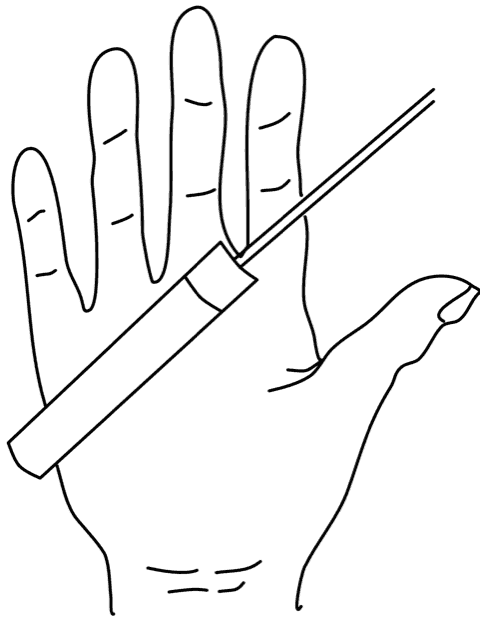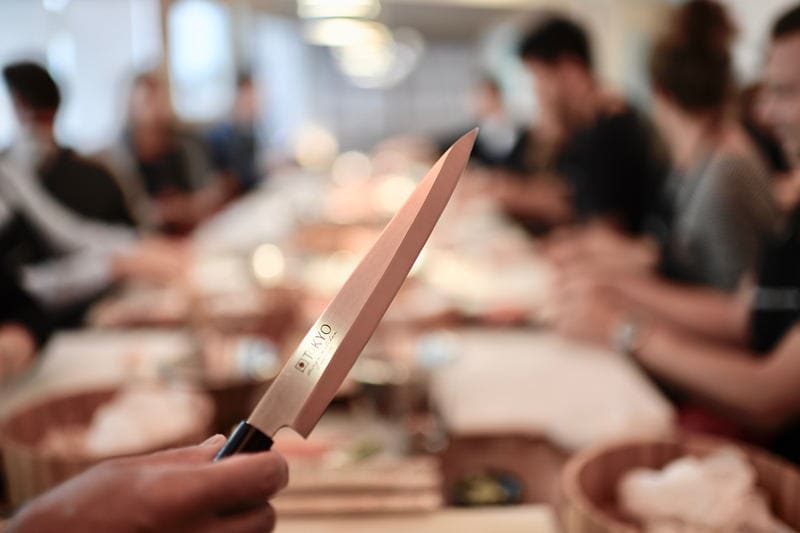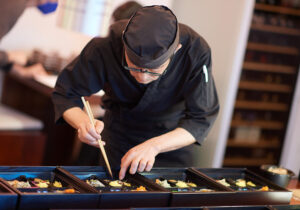In loose succession, we report in our SUSHIYA blog on the subject of Japanese knives and cutting techniques and thus accompany our Sushi course for advanced, which will be held for the first time on March 11, 2018 in our sushi restaurant sansaro.
This is the third part, the first was Japanese knives and cutting techniques - an introduction. The second part was Cutting flavor The series will be continued and supplemented.
JAPANISCHE MESSER & SCHNEIDETECHNIKEN – HANDHABUNG JAPANISCHER MESSER
Japanese knives are handled differently than Western knives.
In Japanese cooking, the cook does not normally stand parallel to the edge of the table, but at a predetermined angle of about 45°. Since the cuts are not made from the wrist as in Western cooking, but from the shoulder, and the forearm and wrist form a straight line, in this posture the blade moves almost at right angles to the front edge of the cutting surface (table/work surface).

Since Japanese knives do not have a finger guard, such a knife is also held and guided differently in the hand. The knife is held diagonally in the hand and the index finger often rests against or on the back of the blade to guide it precisely.

The cutting process is done with traction, i.e. the knife is placed close to the handle and then passed through the material to be cut in a single long stroke.

With a good Japanese knife is not necessary to apply pressure. It is so well balanced that the cut is possible by its size and weight alone. Of course, this is especially true for large knives such as Nakiri or even Yanagiba, although the latter are quite light.

Note: never use the edge of a good knife to remove food from the cutting board or to push it into the cooking pot. No blade can withstand this and very quickly will no longer be sharp. In the case of Japanese knives, this can even cause the blade to break out due to the material.
Wooden boards, which in Japan are often made of hinoki (cypress), are particularly suitable as cutting surfaces. This wood is said to have antibacterial properties. A cutting surface should always be firm, but not too firm. Glass, stone or similar are bad for the blade!
The correct use of Japanese knives requires long practice. When a German chef with years of professional experience tried for the first time to work correctly with Japanese knives under guidance he said with a smile: "That's when I was more skilled on the first day of my apprenticeship. I didn't even know what muscles I had to use for this kind of cutting." - he meant his shoulder, in which he had a severe muscle ache the next day. In the meantime, however, he has become accustomed to this way of working and is always impressed by how precisely you can carry out the finest work with the right tool and the right way of working.
How to handle a Japanese knife, you have now read. But are there really so many different ways of cutting? Oh yes - and in the next part of the series we will introduce some of them.







